Abstract
Ten strains of myocoplasmas were recovered from cultures of synovium or cultures inoculated with synovial fragments from rheumatoid arthritis and one from osteo-arthritis. The source of the organisms is not known. Patients with rheumatoid arthritis had no complement-fixing antibody and no fluorescent staining antibody against the mycoplasmas isolated and no mycoplasma antigen was detected by immunofluorescence in sections of synovia and in synovial fluids.
The strains isolated were of two main serological types and could be distinguished by direct fluorescent antibody staining from standard types of human commensals and the common tissue-culture contaminants. One may be Mycoplasma laidlawii.
Full text
PDF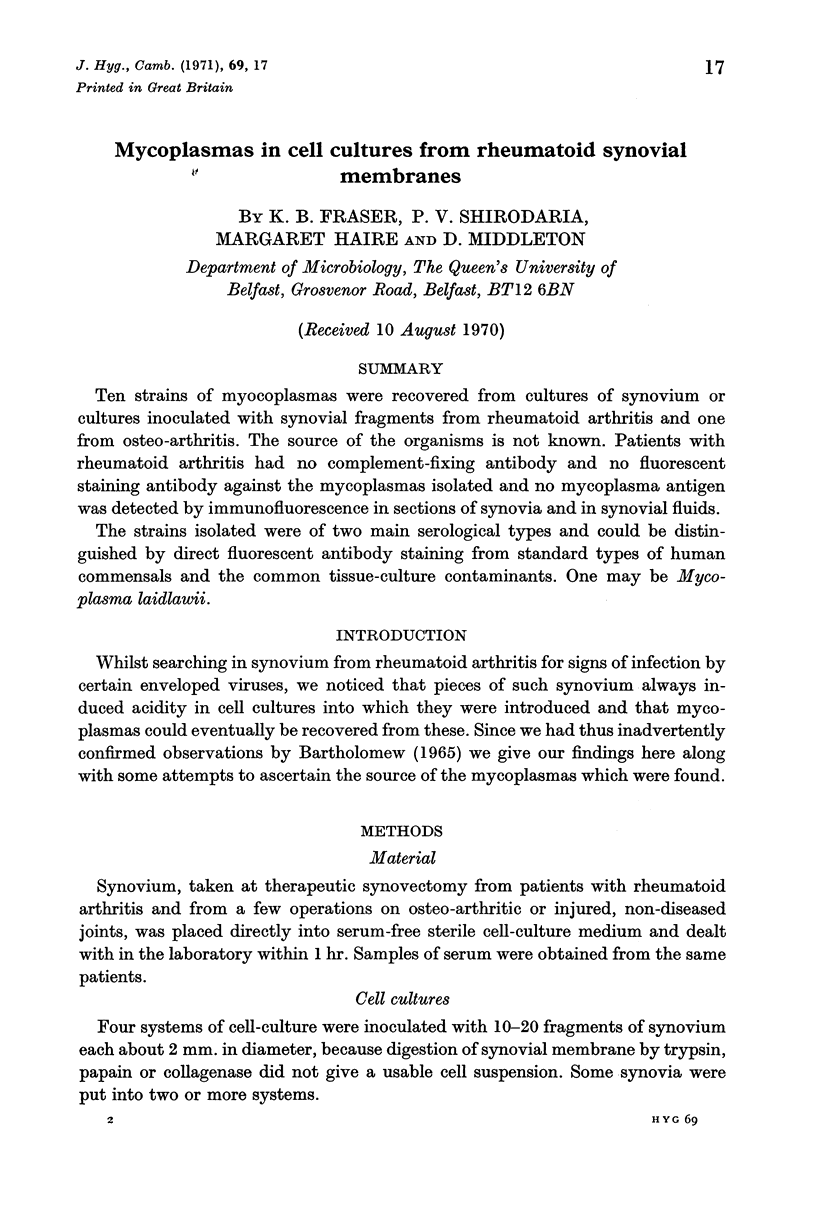
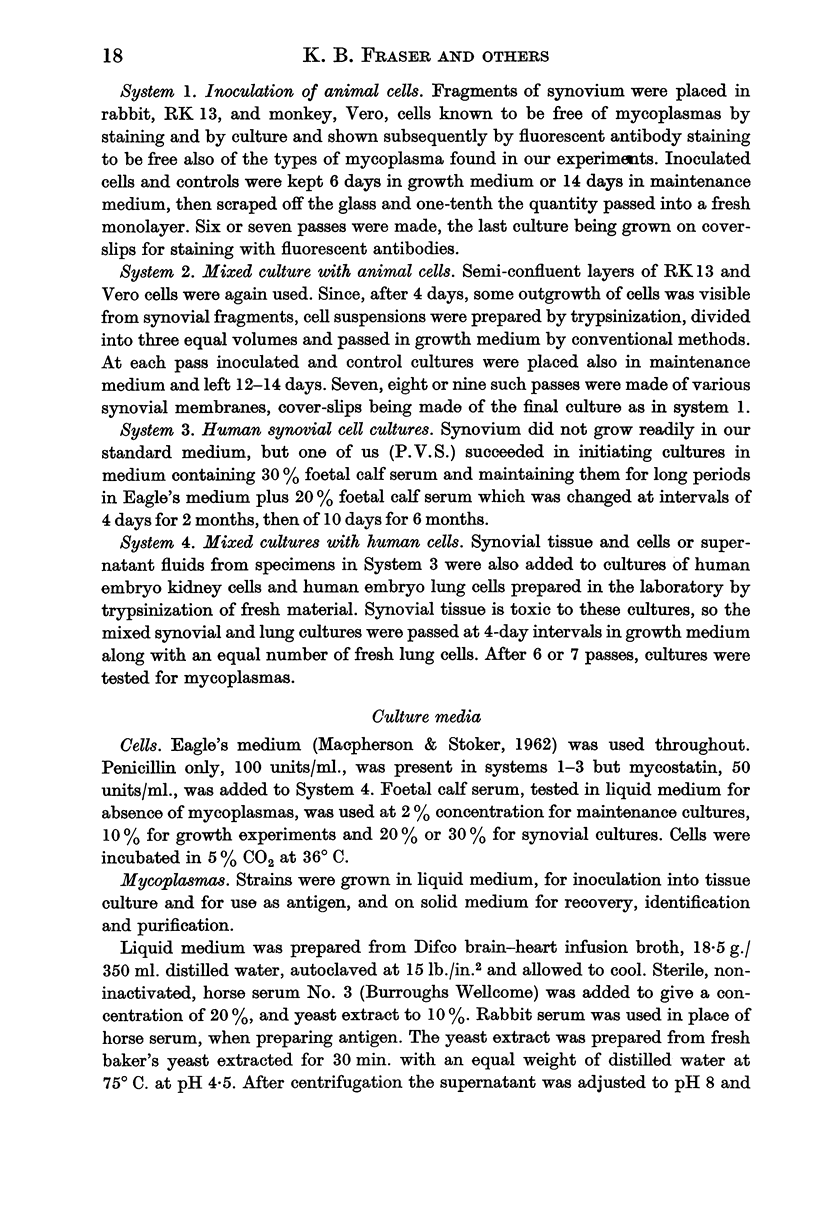
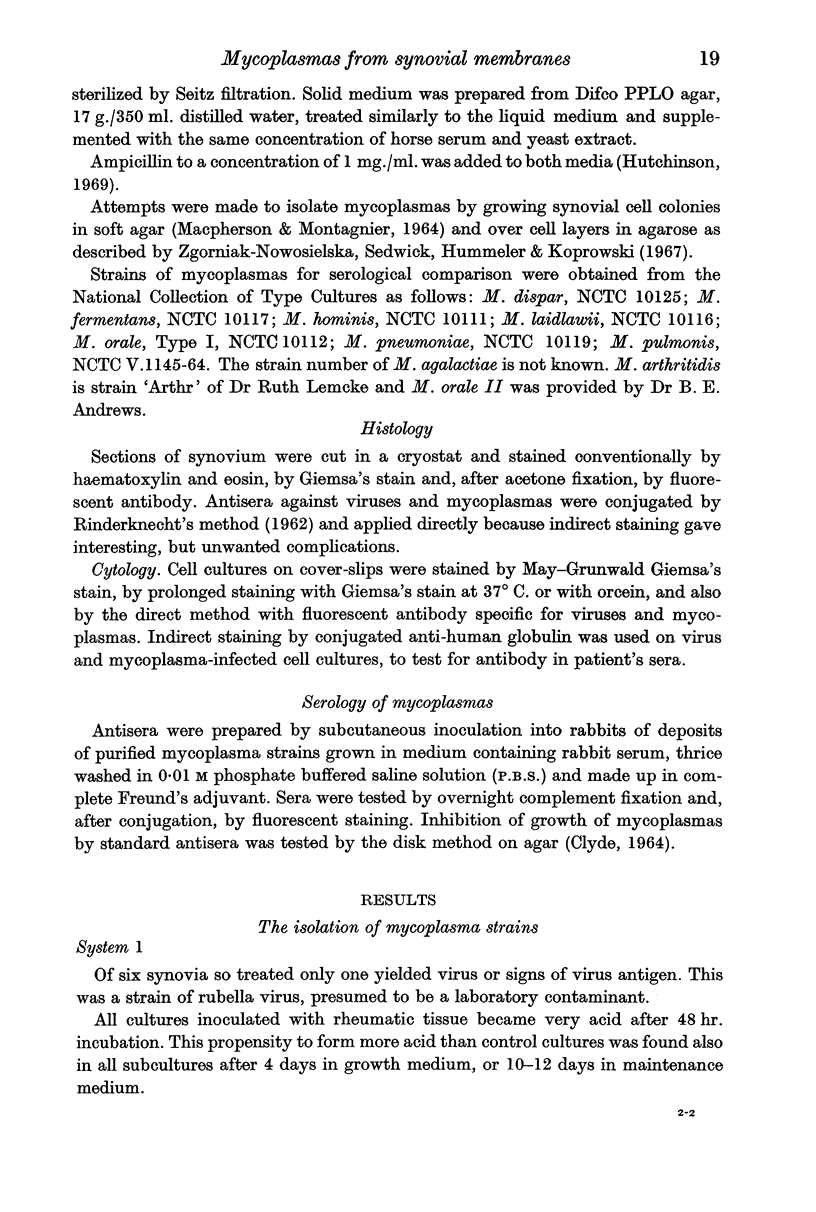
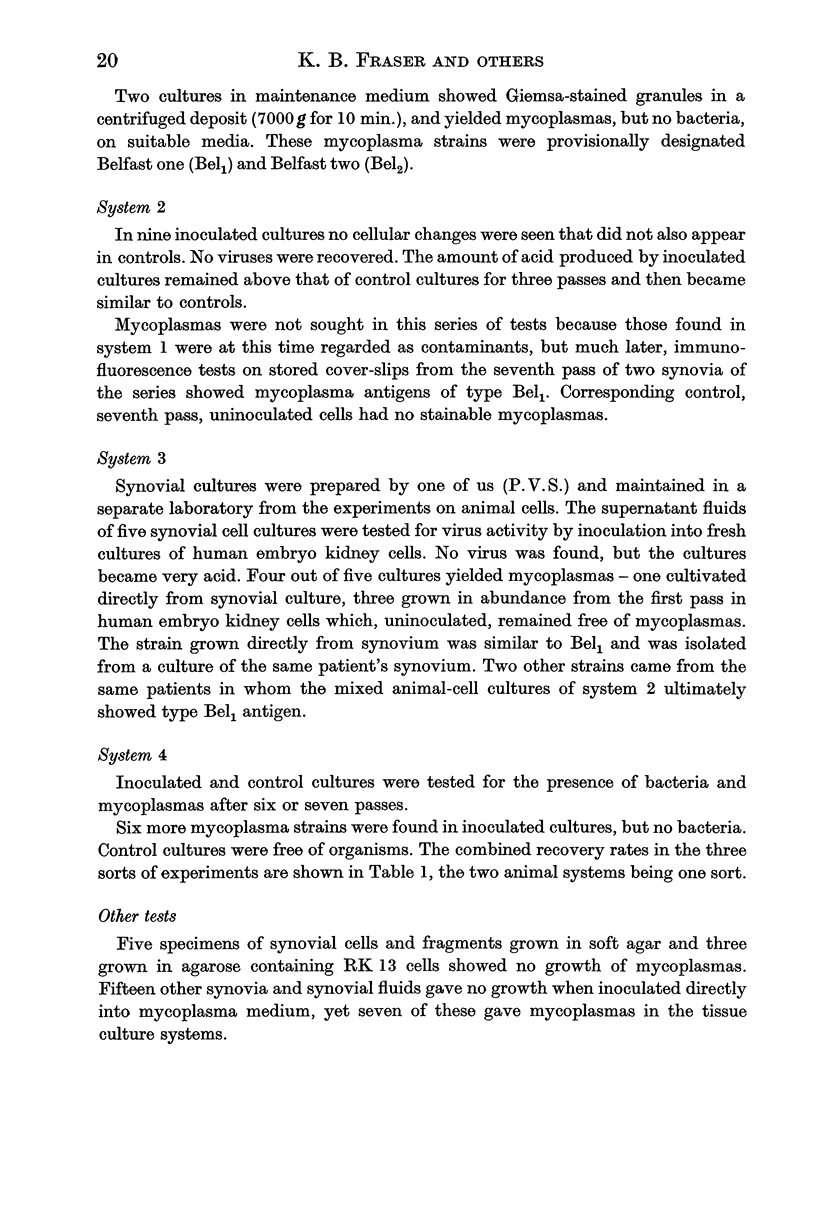
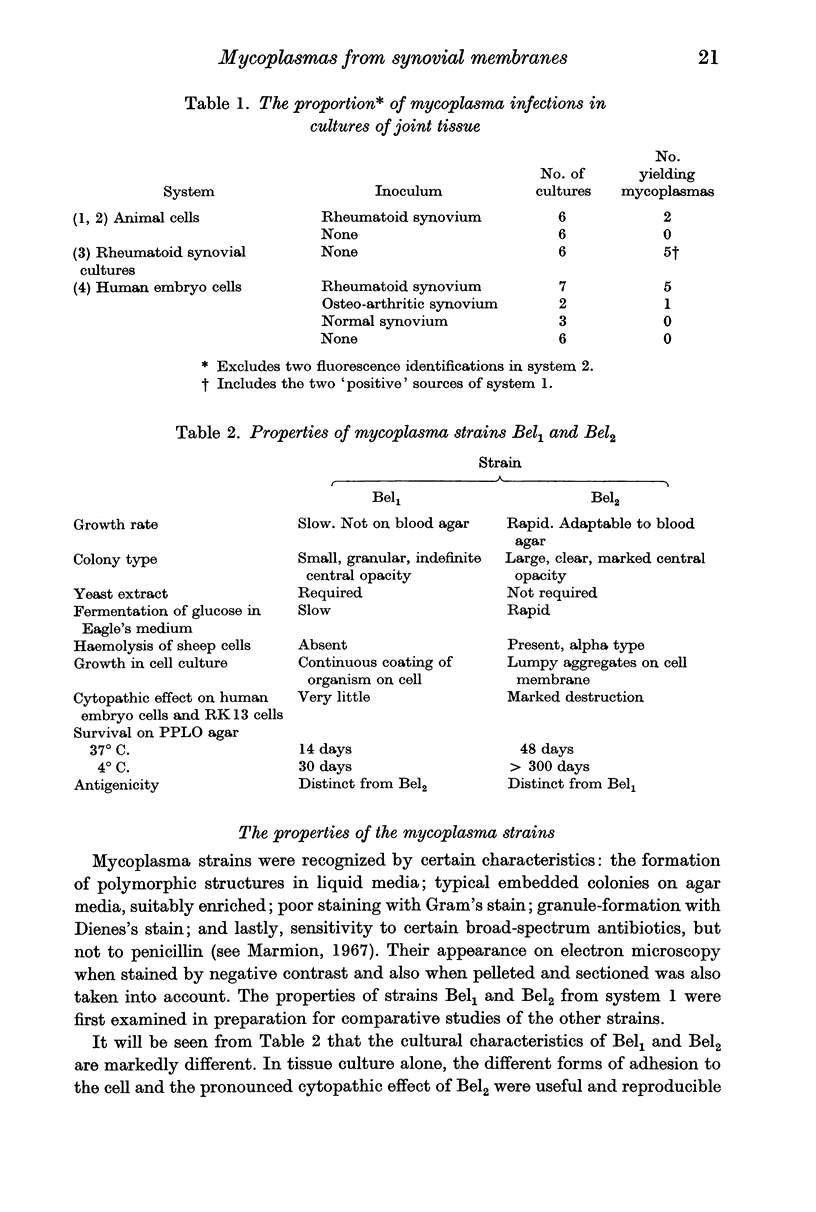
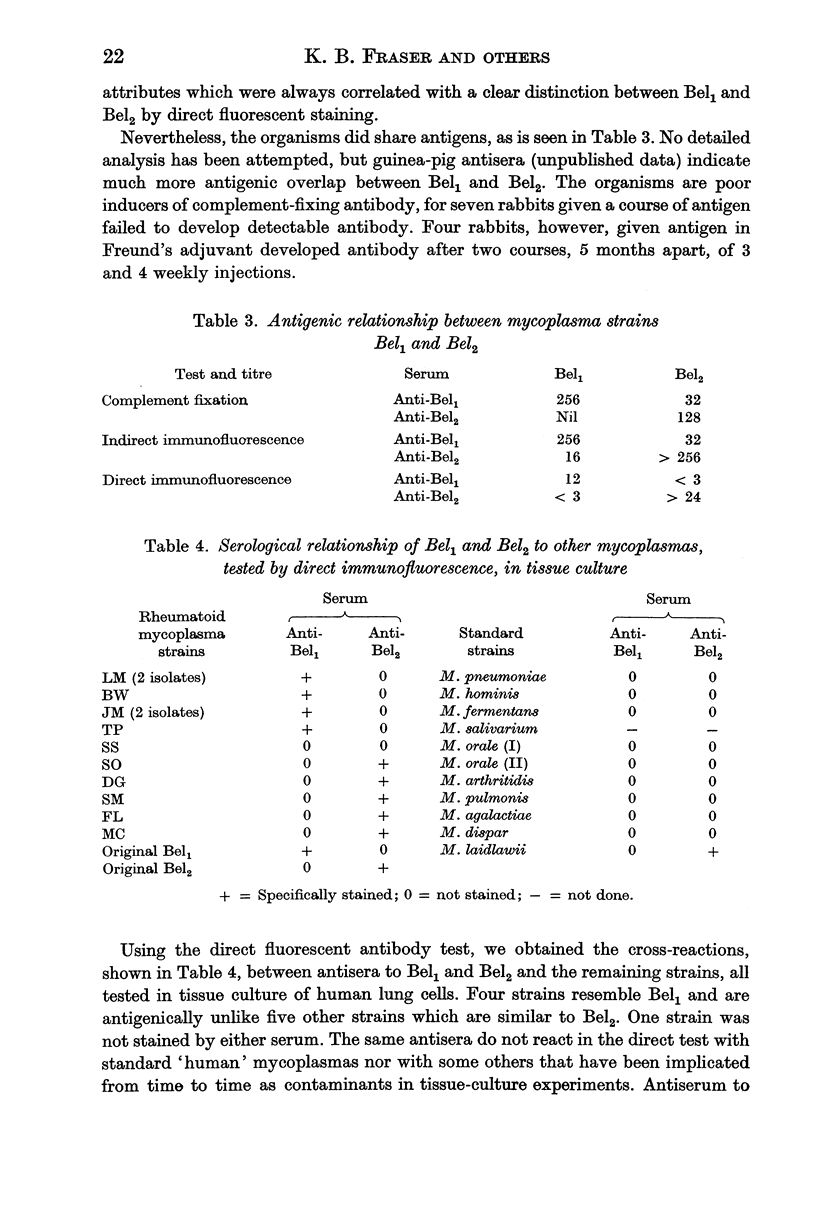
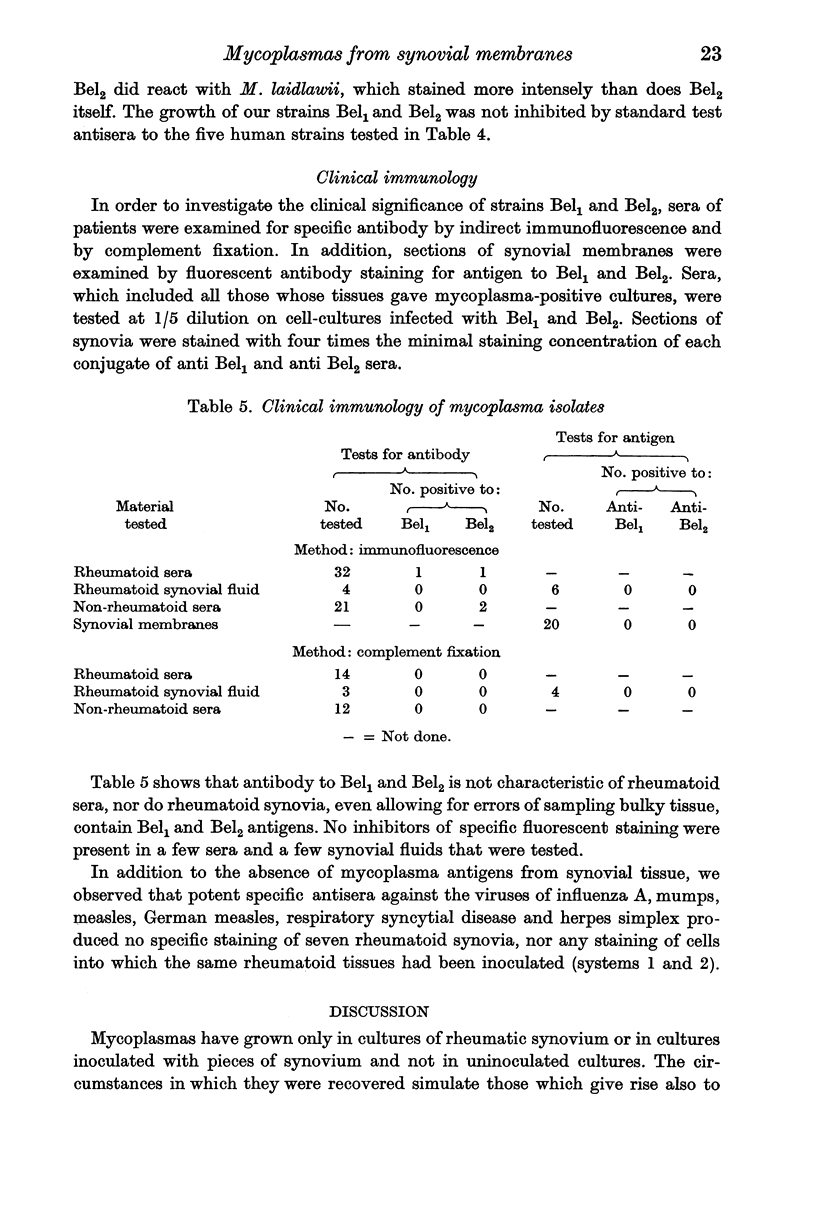
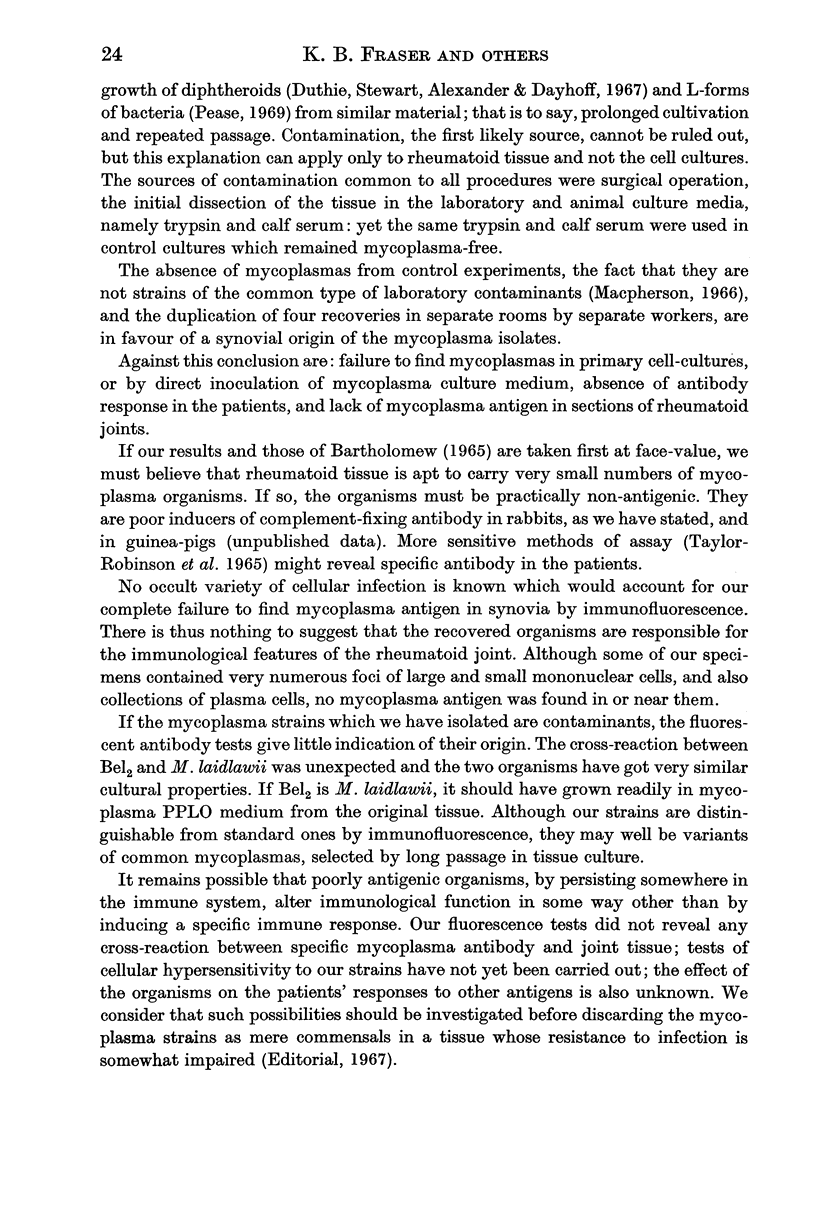
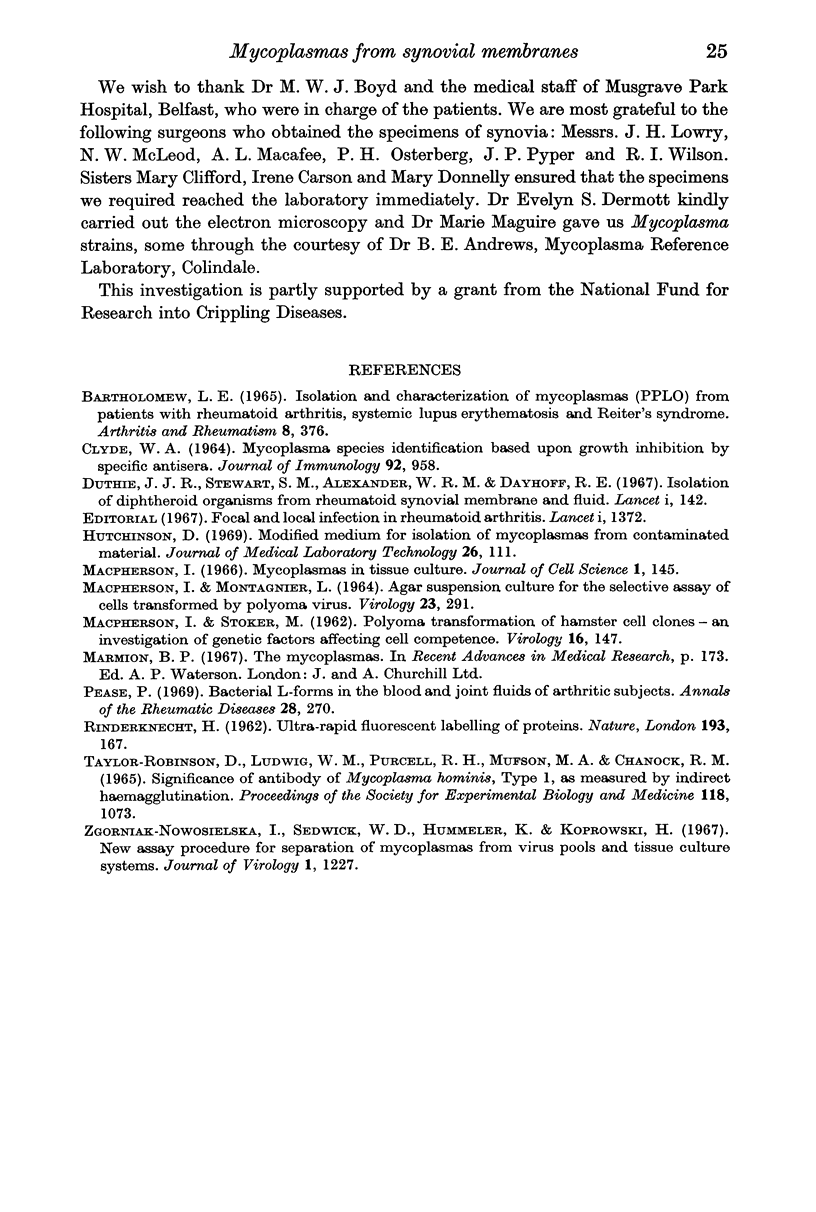
Selected References
These references are in PubMed. This may not be the complete list of references from this article.
- BARTHOLOMEW L. E. ISOLATION AND CHARACTERIZATION OF MYCOPLASMAS (PPLO) FROM PATIENTS WITH RHEUMATOID ARTHRITIS, SYSTEMIC LUPUS ERYTHEMATOSUS AND REITER'S SYNDROME. Arthritis Rheum. 1965 Jun;8:376–388. doi: 10.1002/art.1780080306. [DOI] [PubMed] [Google Scholar]
- CLYDE W. A., Jr MYCOPLASMA SPECIES IDENTIFICATION BASED UPON GROWTH INHIBITION BY SPECIFIC ANTISERA. J Immunol. 1964 Jun;92:958–965. [PubMed] [Google Scholar]
- Duthie J. J., Stewart S. M., Alexander W. R., Dayhoff R. E. Isolation of diphtheroid organisms from rheumatoid synovial membrane and fluid. Lancet. 1967 Jan 21;1(7482):142–143. doi: 10.1016/s0140-6736(67)91039-2. [DOI] [PubMed] [Google Scholar]
- Hutchinson D. A modified medium for the isolation of mycoplasmas from contaminated material. J Med Lab Technol. 1969 Apr;26(2):111–116. [PubMed] [Google Scholar]
- MACPHERSON I., MONTAGNIER L. AGAR SUSPENSION CULTURE FOR THE SELECTIVE ASSAY OF CELLS TRANSFORMED BY POLYOMA VIRUS. Virology. 1964 Jun;23:291–294. doi: 10.1016/0042-6822(64)90301-0. [DOI] [PubMed] [Google Scholar]
- MACPHERSON I., STOKER M. Polyoma transformation of hamster cell clones--an investigation of genetic factors affecting cell competence. Virology. 1962 Feb;16:147–151. doi: 10.1016/0042-6822(62)90290-8. [DOI] [PubMed] [Google Scholar]
- Pease P. Bacterial L-forms in the blood and joint fluids of arthritic subjects. Ann Rheum Dis. 1969 May;28(3):270–274. doi: 10.1136/ard.28.3.270. [DOI] [PMC free article] [PubMed] [Google Scholar]
- RINDERKNECHT H. Ultra-rapid fluorescent labelling of proteins. Nature. 1962 Jan 13;193:167–168. doi: 10.1038/193167b0. [DOI] [PubMed] [Google Scholar]
- TAYLOR-ROBINSON D., LUDWIG W. M., PURCELL R. H., MUFSON M. A., CHANOCK R. M. SIGNIFICANCE OF ANTIBODY TO MYCOPLASMA HOMINIS TYPE 1 AS MEASURED BY INDIRECT HEMAGGLUTINATION. Proc Soc Exp Biol Med. 1965 Apr;118:1073–1083. doi: 10.3181/00379727-118-30049. [DOI] [PubMed] [Google Scholar]
- Zgorniak-Nowosielska I., Sedwick W. D., Hummeler K., Koprowski H. New assay procedure for separation of mycoplasmas from virus pools and tissue culture systems. J Virol. 1967 Dec;1(6):1227–1237. doi: 10.1128/jvi.1.6.1227-1237.1967. [DOI] [PMC free article] [PubMed] [Google Scholar]


